Radios: features, classification and model overview
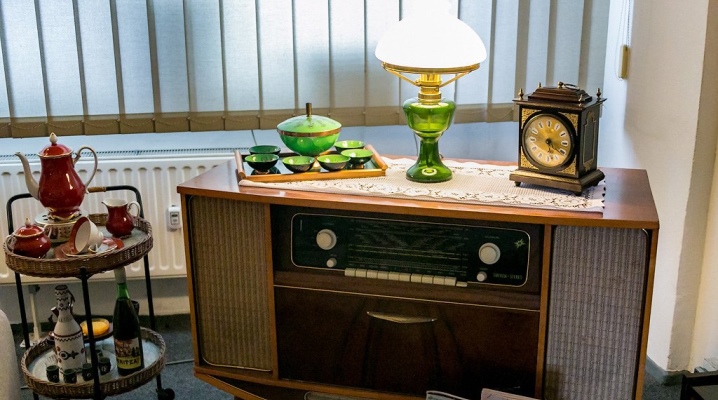
In the XX century, the radiola became a real discovery in the world of technology. After all, manufacturers have managed to combine a radio receiver and a player in one device.

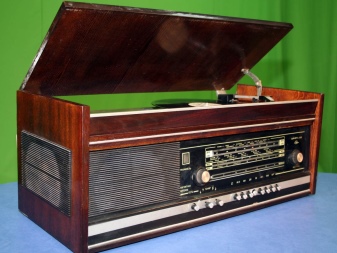
What it is?
Radiola first appeared in the 22nd year of the last century in the United States of America. It got its name in honor of the plant - Radiola. In addition, under this name, manufacturers also began to produce other consumer electronics. However, not many models were released that combined a turntable and a radio receiver.
When such devices came to the USSR, they did not change the name, they remained as radio devices.
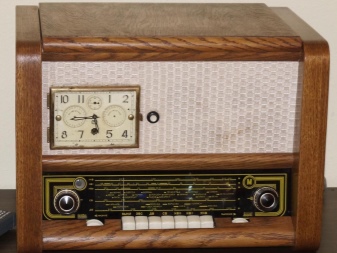
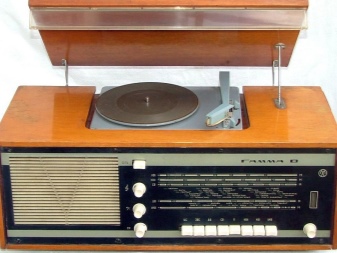
Their popularity in the Soviet Union fell on the 40-70s of the last century. This is due to the fact that tube radios, although they were large, were practical and could be installed in any room. Since the mid-70s of the XX century, the popularity of radio systems has plummeted. After all, at this time began to produce radio tape recorders, which were more modern and compact.
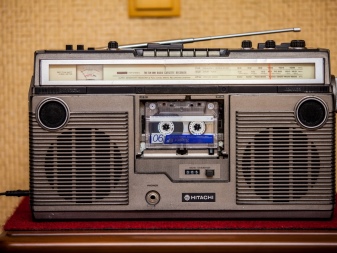

Their classification
Radiola in one housing combines an electrophone and a radio receiver. All radios can be conditionally divided into portable, portable and stationary models.
Portable
Such radios are stereophonic devices, which also belong to the highest group of complexity. They have a special handle with which you can carry them... The power supply for such models is universal. As for weight, thanks to the small loudspeakers, as well as ergonomic microcircuits, it will be quite easy to carry them even for fragile girls.
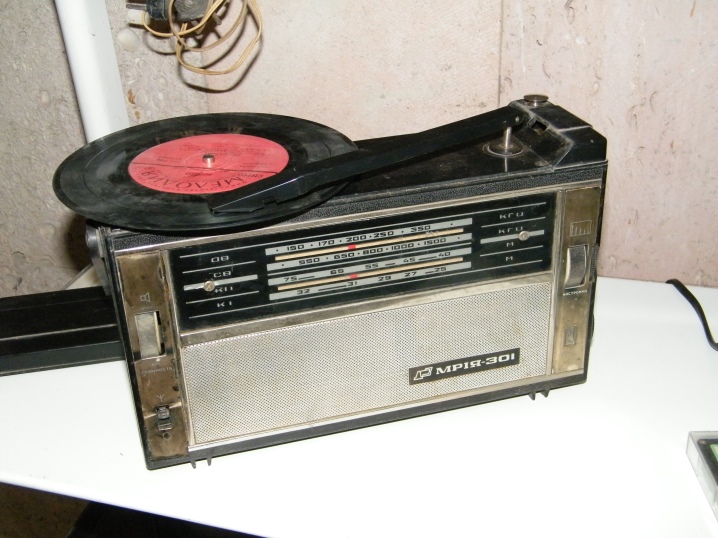
Stationary
These are lamp console models that have large dimensions and impressive weight. They are designed to operate on the network, which is why they are called networked. Most often, first-class stationary radios were produced on legs in order to make them easier to install. Some of them were produced at the Riga Radio Plant. Among them it is worth noting transistor radio "Riga-2", which was quite popular at the time.
If we talk about these devices, then they usually include acoustics, an amplifier, and also a tuner. As for the latter, it is a special unit, the direct purpose of which is to receive and convert signals from radio stations into audio frequencies. Due to the fact that there are MW, LW and HF bands available, such radios are very popular among those who live in places very remote from radio stations.
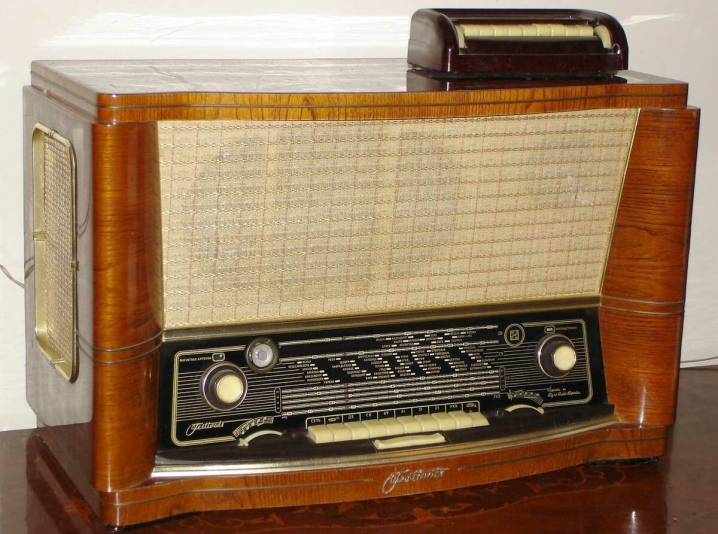
Wearable
Such devices are most often have autonomous or universal power supply. They are intended to be worn. They are usually small in size and just as light in weight. In some cases, these radios can weigh as little as 200 grams.
Modern models can have both digital and analog settings. In some models, you can even listen to sounds through headphones.


It is also worth noting that according to the number of frequency ranges that the radio channels receive, they can be single-band or dual-band.
If we talk about power supplies, then they can be either standalone or universal. In addition, the radio is also distinguished by the nature of the sound. Some of them can be stereophonic, the other mono. Another difference is the signal source. Radio relay devices operate from terrestrial radio stations, while satellite devices transmit sound via cable.
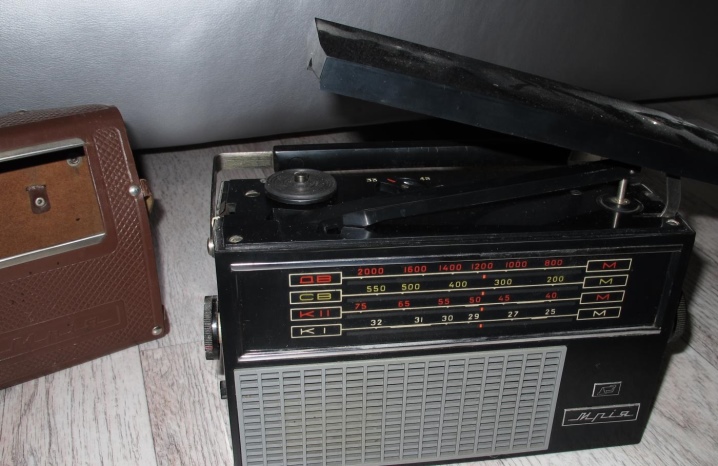
Model overview
In order to learn a little about which of the models deserve attention today, it is worth considering the rating of Soviet and imported radios.
"SVG-K"
One of the first devices is the console all-wave model "SVG-K"... It was released at the Alexandrovsky Radio Plant in the 38th year of the last century. It was made on the basis of a fairly high-quality receiver "SVD-9".
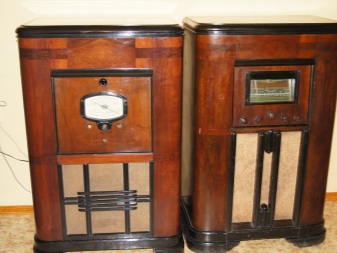

"Riga-102"
In 69 of the last century, the radio "Riga-102" was produced at the Riga Radio Plant. She could receive signals from different ranges. If we talk about the technical characteristics of such a model, they are as follows:
- the audio frequency range is 13 thousand hertz;
- can operate from a 220 volt network;
- the weight of the model is in the range of 6.5-12 kilograms.
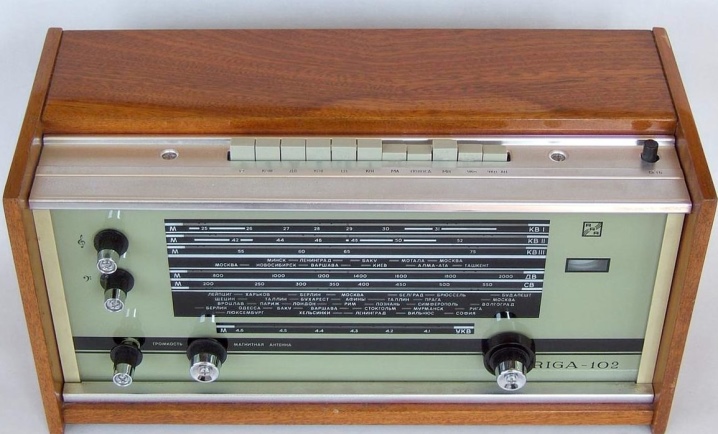
"Vega-312"
In 74 of the last century, a household stereophonic radio tape was released at the Berdsk Radio Plant. The technical characteristics of this model are as follows:
- the radiola can operate on a voltage of 220 volts;
- the power of the device is 60 watts;
- the long frequency range is 150 kHz;
- the range of medium waves is 525 kHz;
- the short wave range is 7.5 MHz;
- the radio weighs 14.6 kilograms.
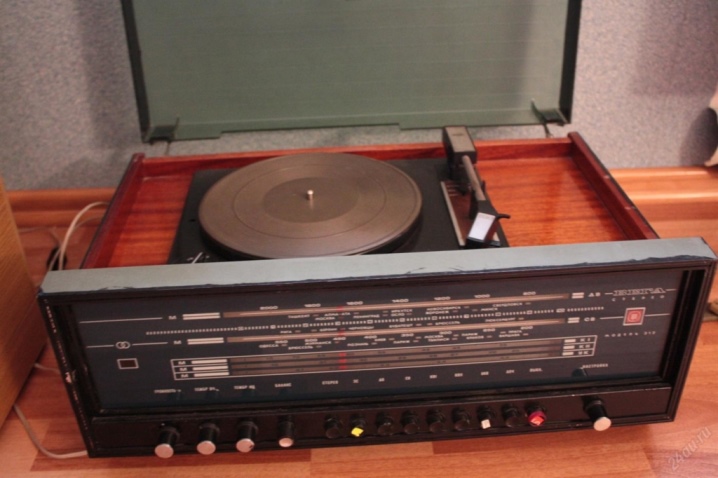
"Victoria-001"
Another device made at the Riga Radio Plant is the Victoria-001 stereo radio. It was made on semiconductor devices.
It became the base model for radios that run entirely on transistors.
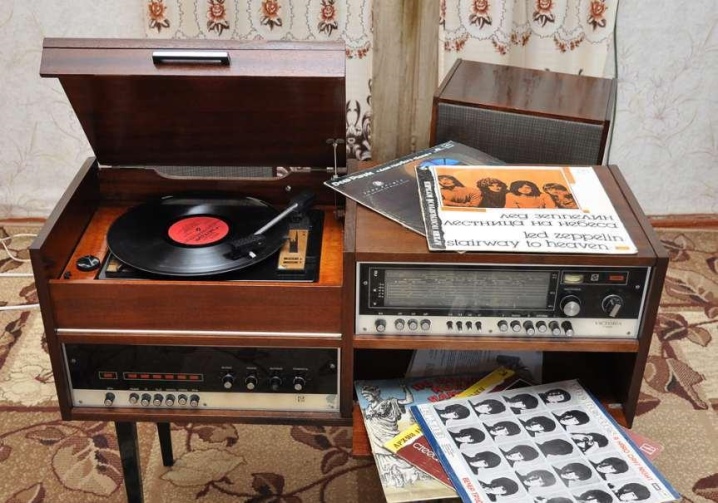
"Gamma"
This is a semiconductor tube radio, which had a color music installation made at the Murom plant. As for the technical characteristics, they are as follows:
- can work from a network of 20 or 127 volts;
- the frequency range is 50 hertz;
- the power of the device is 90 watts;
- the radio has three speeds, which are 33, 78 and 45 rpm.
If we talk about the color-musical setting of the device, then it has three stripes. The tuning frequency of red is 150 hertz, green is 800 hertz, and blue is 3 thousand hertz.
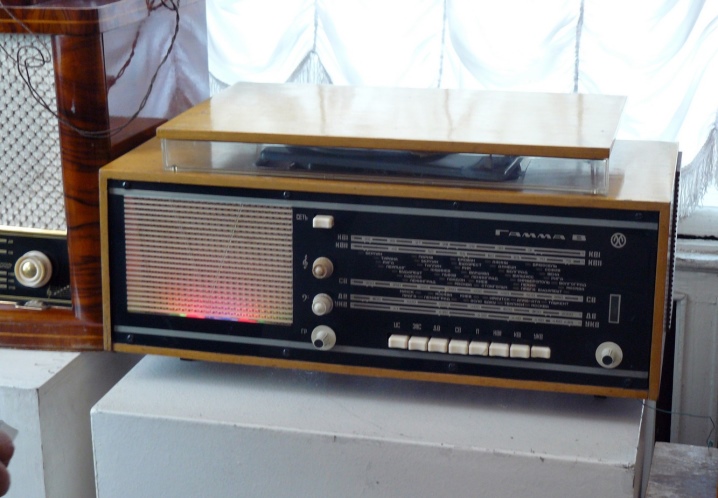
"Rigonda"
We released this model at the same Riga Radio Plant. Its production fell on 63-77 years of the last century. The name was given to the radio in honor of the fictional island of Rigonda. It served as a prototype for many household radios in the Soviet Union.

"Efir-M"
This is one of the first models of the USSR, which had the opportunity operate on a battery of galvanic cells. It was released in 63 of the last century at the Chelyabinsk plant. The wooden case of the device is made in a classic style. It is complemented by a cover made of the same material. You can switch ranges using the keys. The radio can work from a 220 volt network, and from six batteries.
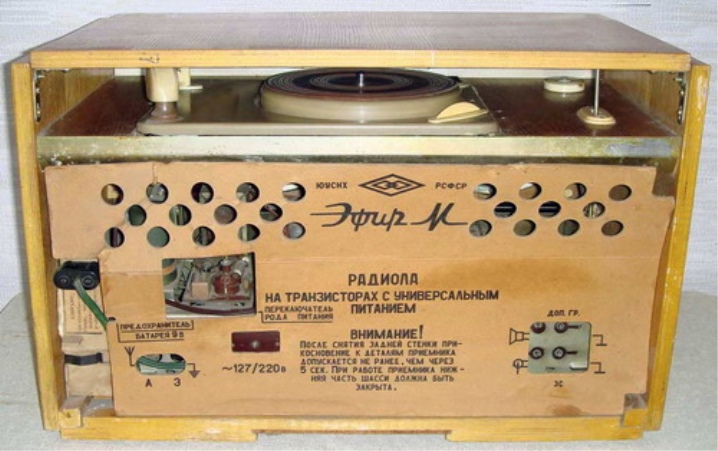
"Youth"
This model of the radio was produced at the Kamensk-Uralsky Instrument-Making Plant in the 58th year of the last century. Its technical characteristics are as follows:
- the frequency range is 35 hertz;
- power consumption is 35 watts;
- the radio weighs at least 12 kilograms.
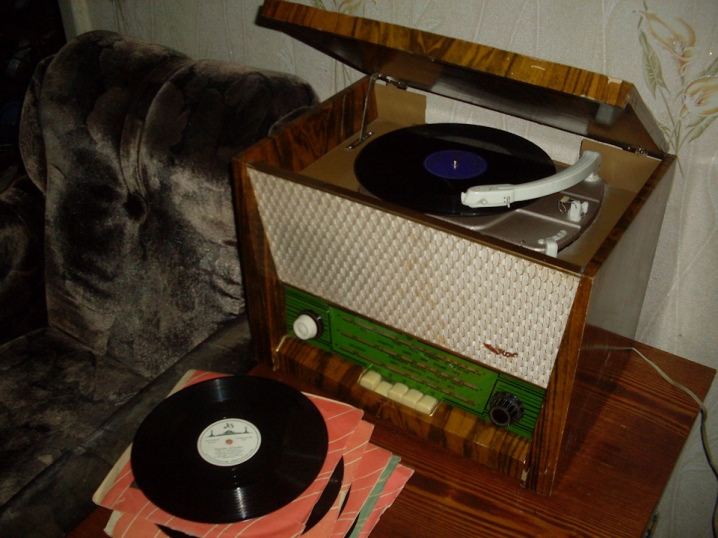
"Cantata-205"
In 86 of the last century, a stationary transistor radio was produced at the Murom plant.
Its main components are an EPU-65 turntable, a tuner, and 2 external speakers.
The technical characteristics of this radio are as follows:
- the frequency range is 12.5 thousand hertz;
- power consumption is 30 watts.
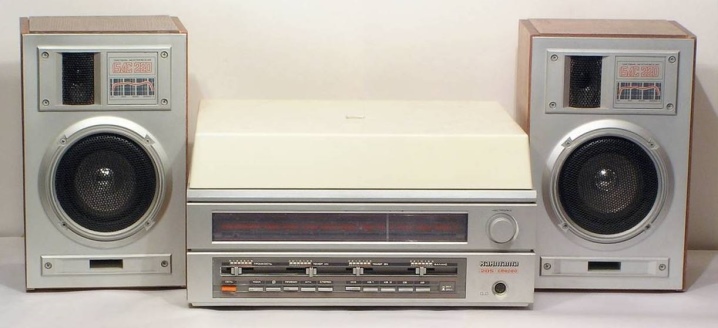
"Serenade-306"
In 1984, this transistor radio was produced at the Vladivostok Radio Plant. She had the ability to smoothly adjust the sound and tone. Its frequency range is 3.5 thousand hertz, and the power consumption is equal to 25 watts. The turntable disc can rotate at 33.33 rpm. The radiogram weighs 7.5 kilograms. At the same plant in 92 of the XX century, the last radio "Serenade RE-209" was produced.
If we talk about today, then models resembling the latest radio are produced in China. Among them, it is worth noting the device Watson PH7000... Now the popularity of radio is not as huge as in the last century.However, there are people who are nostalgic for those times and for the technology that was produced then, and therefore buy it. But so that such a purchase does not disappoint, it is worth choosing from the best models.
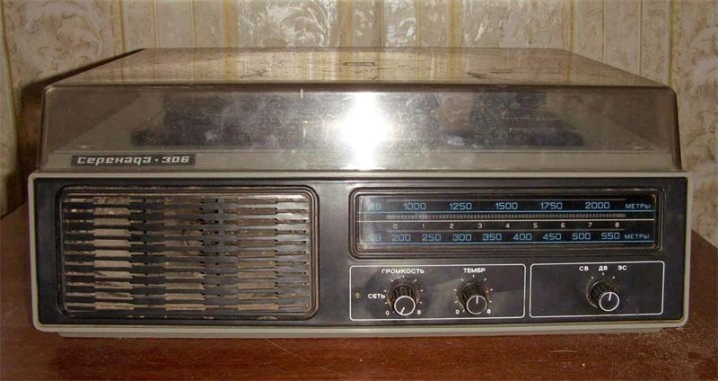
Review of the "Symphony-Stereo" radio, see below.













The comment was sent successfully.